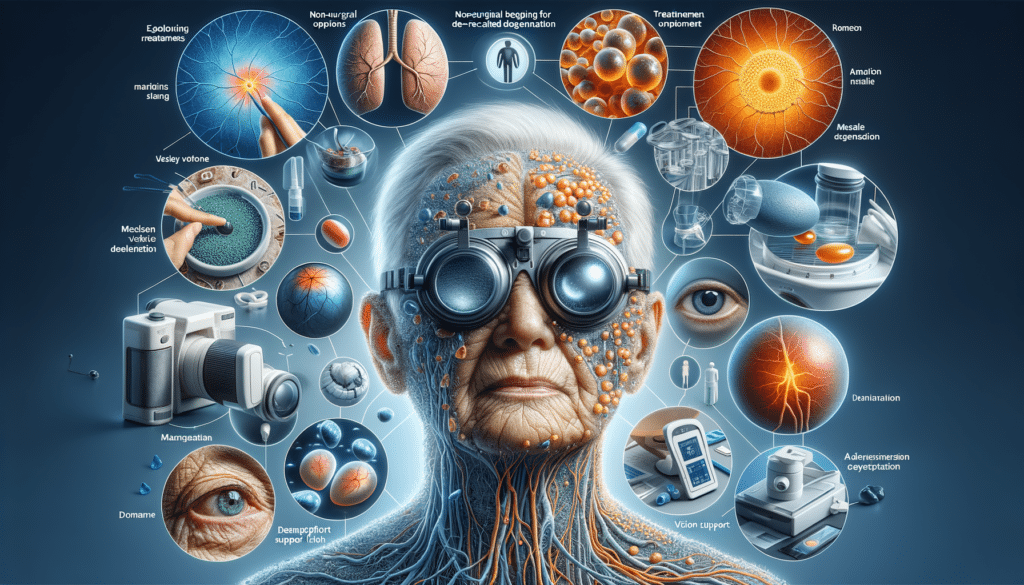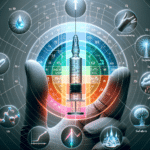Exploring Treatment Options for Wet AMD
Wet age-related macular degeneration (AMD) is a condition affecting millions worldwide, characterized by the growth of abnormal blood vessels under the retina, leading to vision loss. As of 2025, there are several treatment options available that aim to slow down the progression of wet AMD and preserve vision. Among these, anti-VEGF (vascular endothelial growth factor) injections are widely used. These injections work by inhibiting the growth of new blood vessels, thus reducing leakage and swelling.
Another promising treatment is photodynamic therapy, which combines a light-activated drug with laser treatment to target and destroy abnormal blood vessels. While not as commonly used as anti-VEGF injections, it provides an alternative for patients who may not respond well to other treatments.
Emerging therapies are also on the horizon, including gene therapy and stem cell therapy, which hold the potential to offer more sustainable solutions by addressing the underlying causes of wet AMD. These innovative approaches are still under research but show promise in preclinical and early clinical trials.
Patients and healthcare providers are encouraged to discuss the various treatment options, considering factors such as the stage of the disease, potential side effects, and individual health conditions. Regular eye examinations and early detection remain crucial in managing wet AMD effectively.
Non-Surgical Options People Are Exploring for Vision Support
In addition to medical treatments, individuals with wet AMD are exploring non-surgical options to support their vision and enhance quality of life. Nutritional supplements, particularly those containing antioxidants like lutein and zeaxanthin, are often recommended to support eye health. These supplements may help slow the progression of AMD by protecting the retina from oxidative stress.
Moreover, lifestyle modifications play a significant role in managing vision health. Regular exercise, a balanced diet rich in leafy greens and fish, and smoking cessation are all encouraged as they contribute to overall well-being and may reduce the risk of AMD progression.
Adaptive devices are another avenue for vision support. These include magnifying glasses, screen readers, and specialized lighting that help individuals perform daily tasks with greater ease. Technology is also stepping in with apps and devices designed to assist those with low vision, providing tools for reading, navigation, and communication.
Exploring these non-surgical options allows individuals to tailor their approach to vision support, combining medical treatments with lifestyle and technological aids to maintain independence and quality of life.
Comparing Treatments for Dry vs Wet Macular Degeneration
Macular degeneration is a leading cause of vision loss, and it manifests in two primary forms: dry and wet. Understanding the differences between these conditions is key to choosing the appropriate treatment path. Dry AMD, the more common form, progresses gradually and is characterized by the thinning of the macula. Currently, there is no cure for dry AMD, but treatments focus on slowing its progression. Nutritional supplements are often recommended, as they may help reduce the risk of progression to advanced stages.
In contrast, wet AMD is less common but more severe, leading to rapid vision loss. Treatments for wet AMD, such as anti-VEGF injections, aim to halt the growth of abnormal blood vessels and prevent further damage. While both forms share some lifestyle management strategies, such as diet and exercise, the medical treatments differ significantly due to the distinct mechanisms of each condition.
Recent advancements in research are blurring the lines between treatments for dry and wet AMD, with therapies under development that may benefit both forms. For instance, gene therapy and regenerative medicine hold promise for addressing the underlying causes of macular degeneration, offering hope for more comprehensive treatment strategies in the future.
Patients are advised to work closely with their ophthalmologists to understand their specific condition and explore the most suitable treatment options, keeping abreast of the latest research and advancements in the field.


